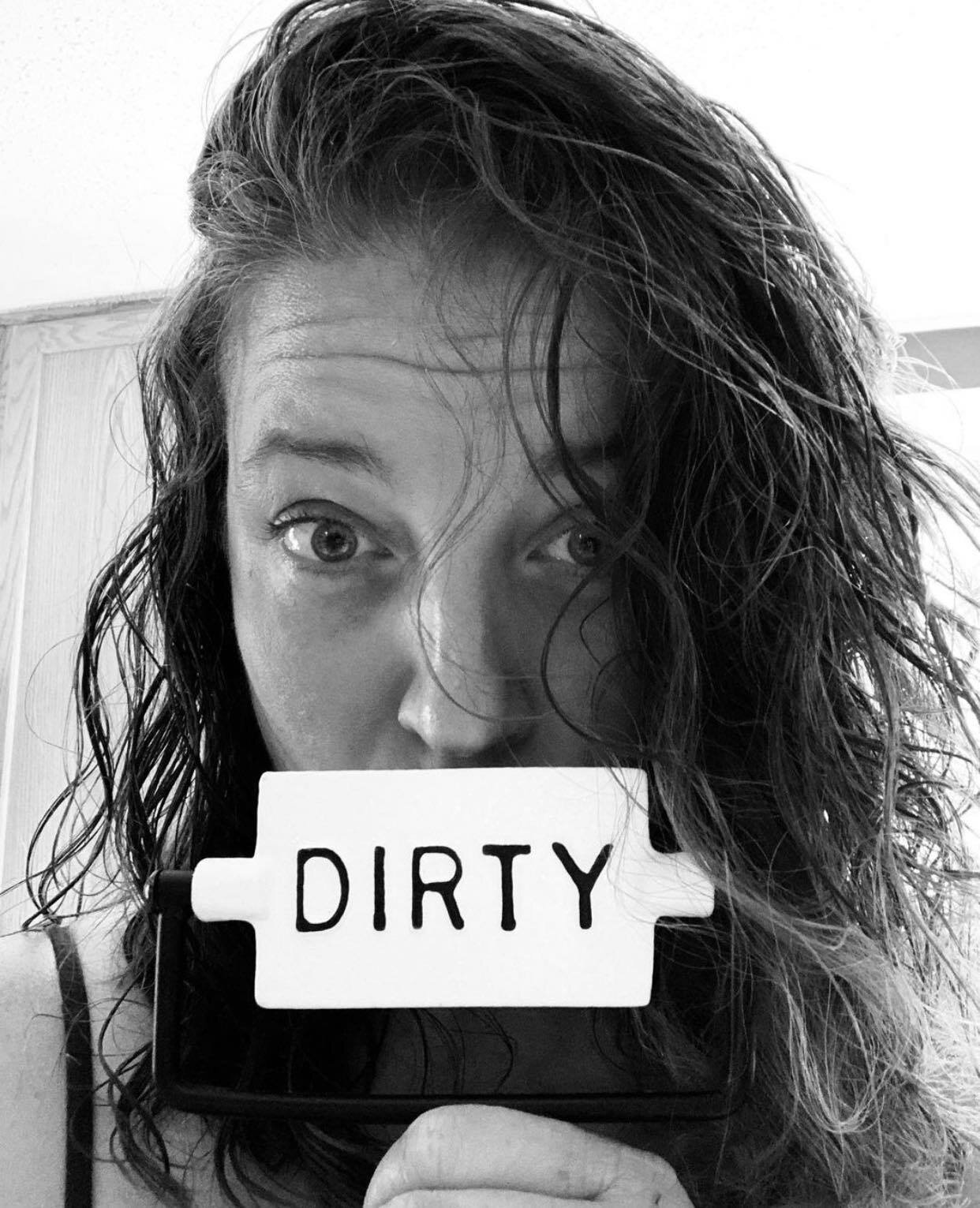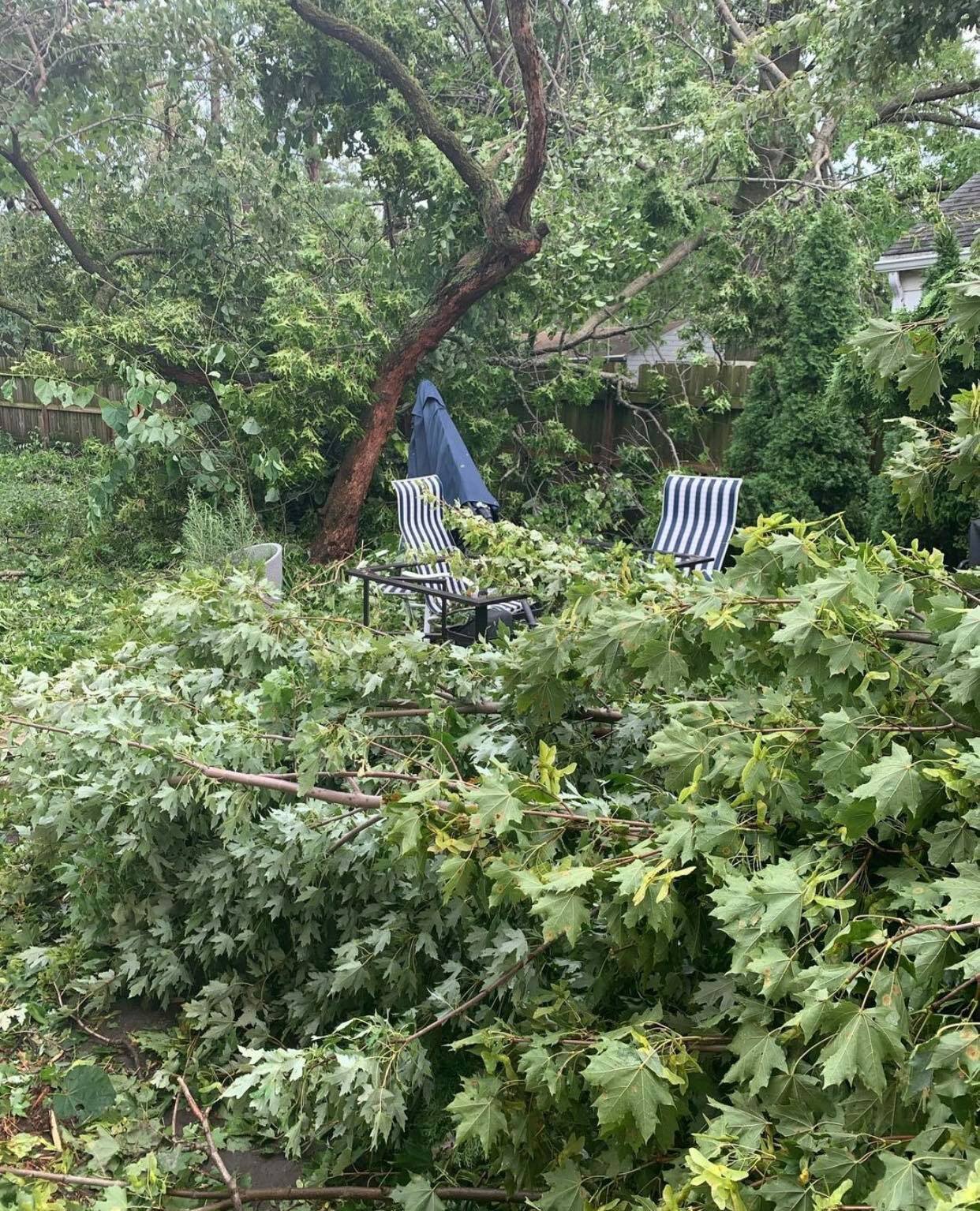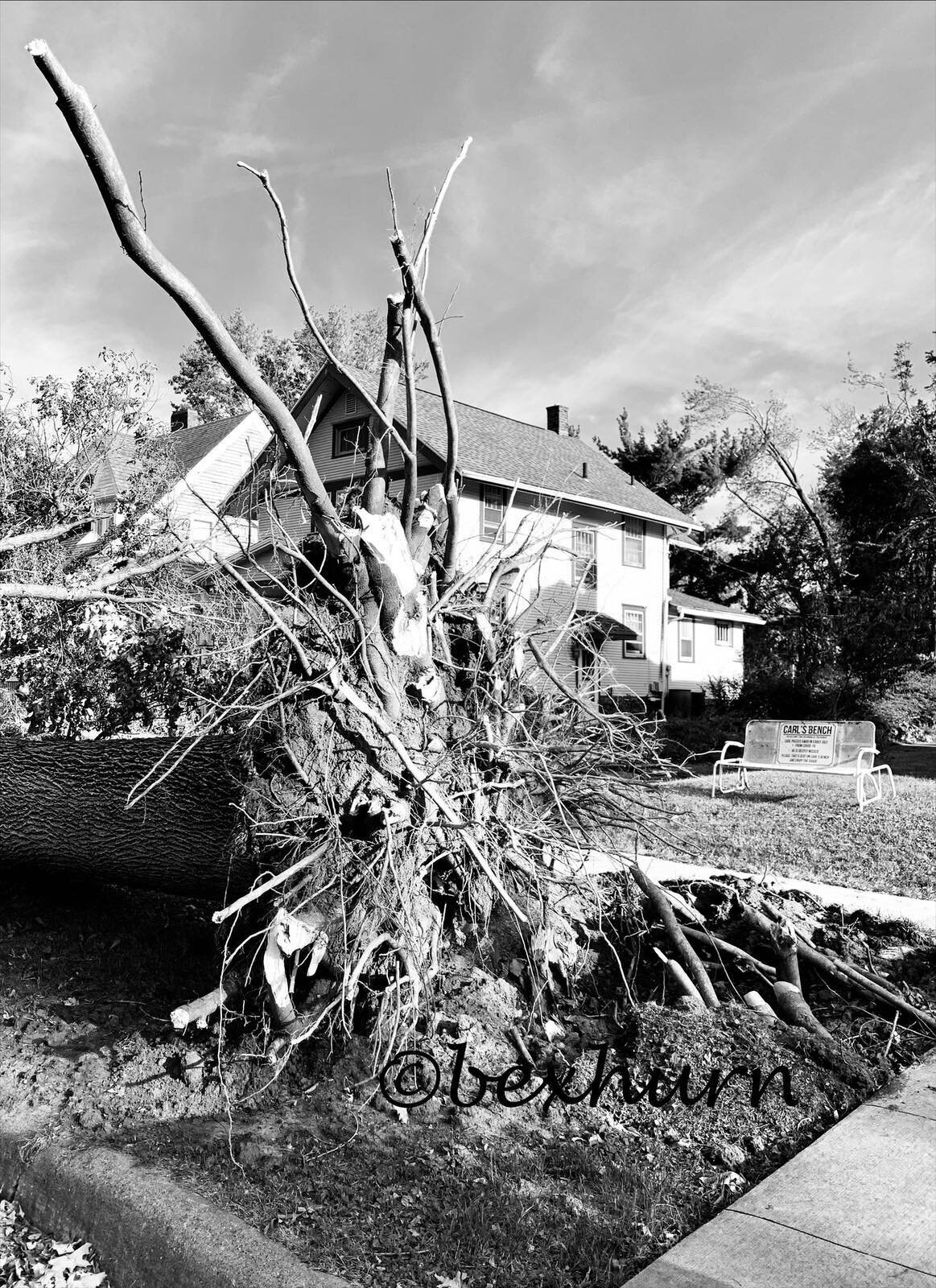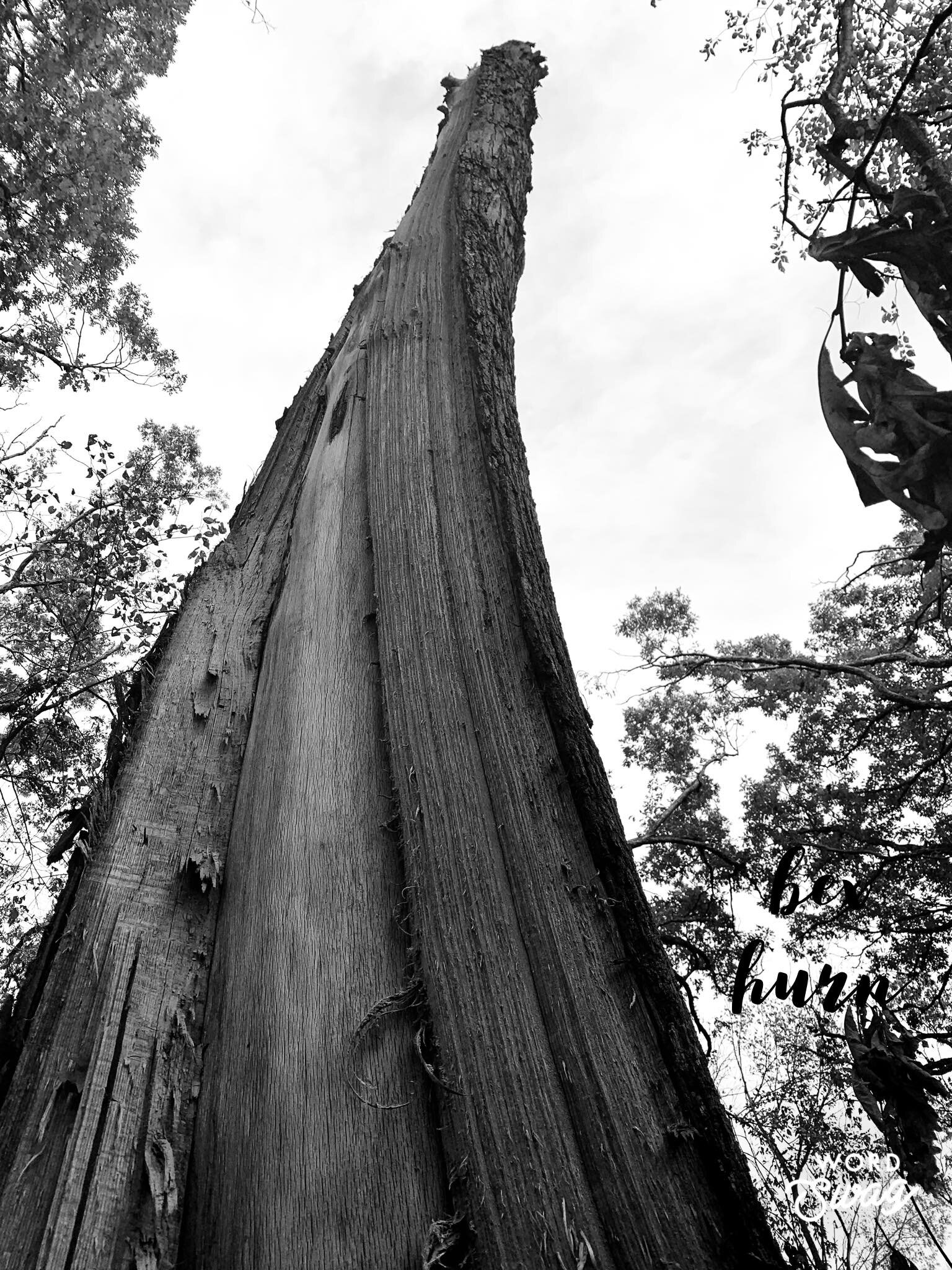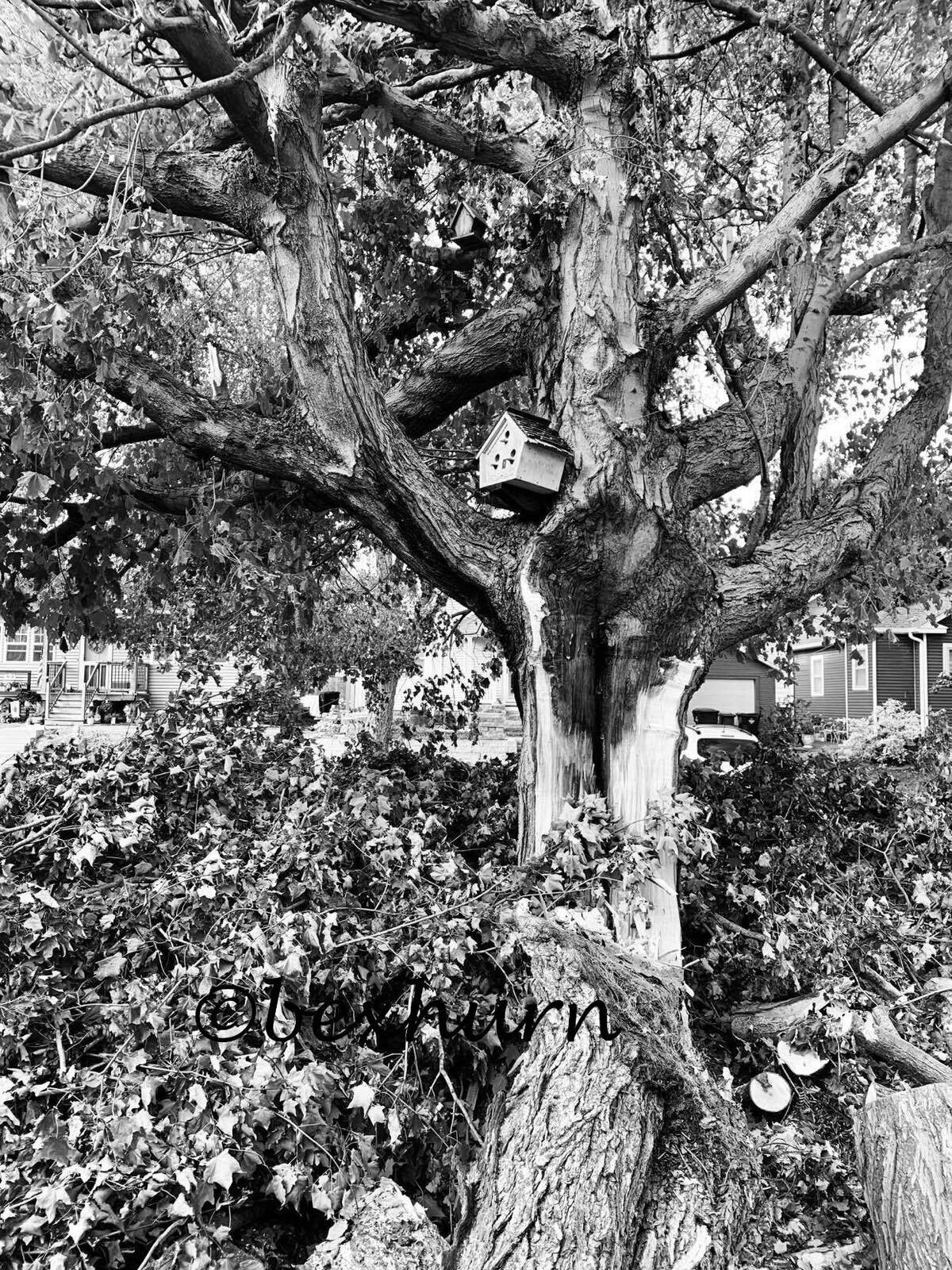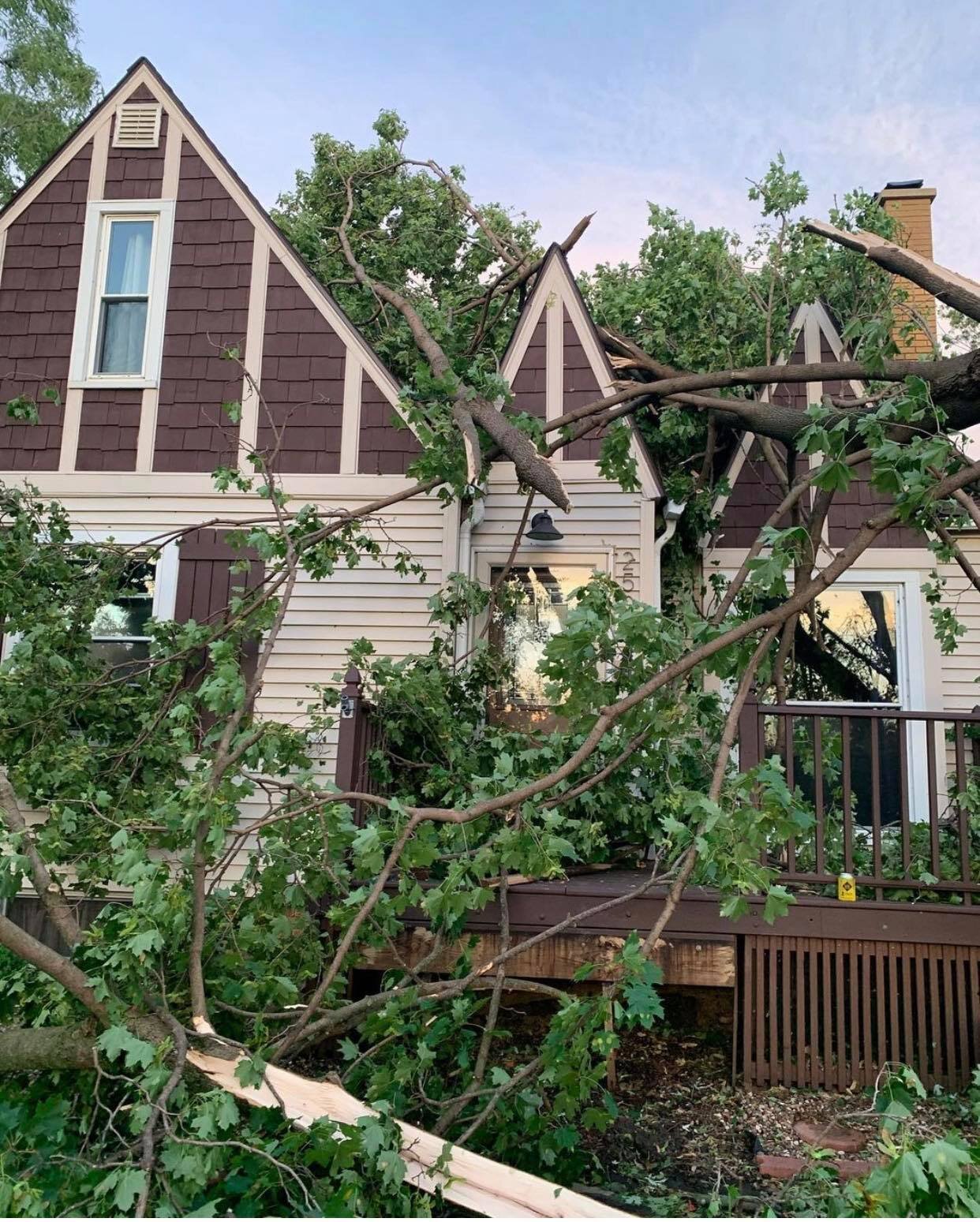Bex X On View Gallery
Once there was a tree...
Q.) Obvious questions first, how did this project start for you?
A.) Iowa was recently leveled by a derecho, with Cedar Rapids taking the brunt of the attack. I was inside a building and relatively unaware exactly how bad things were during the storm. I received a text from my husband who had been at home during the whole thing and it read: “we lost all our trees”. Dismissing the text, as I wasn’t in a place to comprehend it, I drove home on the backroads and it was then that I realized what a war zone my city had become. I parked down the street as it was impossible to get close to our house due to downed trees and wires. I remember following him to our house in a stupor and my jaw literally dropped because it was so surreal. It was like a bomb had been dropped on our neighborhood. I snapped pictures almost from the beginning, mostly because I couldn’t bear to look at anything with my own eyes. I suppose it was the way I chose to cope in the moment, to distance myself from the scene, as I felt vaguely out-of-body. In that same sense, I kept the series black and white because that first night as I looked through the pictures on my phone, it was just too painful. The color made it seem so real. Somehow black and white made things seem less emotional and more beautiful, like a type of apocalyptic Ansel Adams homage.
Q.) You’ve got pictures from all over, did you set any limitations on the project?
A.) Not intentionally, but I realized that I would only have a few days to take pictures. Iowans don’t wait around and we get to work, so trees were coming down immediately and disappearing forever. The first day I actually woke up early and took pictures in my neighborhood in an attempt to process what had just happened, not even thinking of a larger project at that time. But as people started chainsawing the trees, I became a bit panicky and thought about all my old neighborhoods. When you grow up in a place for decades, you know the trees even if they aren’t in your yard and that was when I started plotting how to take pictures from all the neighborhoods I grew up in. As days went by and I started having conversations with neighbors and friends, I realized I wasn’t alone in this huge sense of loss. I had a conversation with a close friend and she said, “you can fix houses, you can repair structures-but you can’t replace the trees”. It gave me the idea to call out on social media for anyone who wanted black and white pictures of their trees. The response was overwhelming and I was unable to keep up. I tried my best to document but there was just so much loss and it was disappearing so quickly. The project clearly started out as a coping mechanism and in a way it distracted me from the immediate grief but the grief came anyway. One of my pictures was from Redmond Park, which had been hit particularly hard. A few days later when I drove by the exact spot, the tree was just a stump and days after that, completely gone. So in a sense, the photos did what I wanted, they documented what happened but they didn’t necessarily take away the grief, just delayed it.
Q.) What did you learn from this whole process?
A.) Probably one of the most eye-opening moments was right in the beginning. I was at someone’s house on Northwood to take a picture of their 150 year old tree that had crashed through their roof and into the first floor, leaving the home unlivable for at least a year. Despite this tragedy, what dominated the conversation was the loss of the tree. The talk of how they moved to the neighborhood because of the trees. Of how her boys take their swing and spin it all the way up and let ‘er fly. How they use the hammock and shade from the tree. Every house after that was the same. Sure, there was some talk about the headaches and stress from all the damage, but when people talked about loss, it was the trees. I can’t tell you how many people I saw cry.
Q.) Did you learn anything technique-wise from this series?
A.) I’ve never lived so in-the-moment with a project before. I can be a bit of a perfectionist but I was personally dealing with a destroyed neighborhood, no power, no WiFi, trying to work against people clearing out the trees, taking pics in all types of lighting(most not ideal at all) and eventually getting shut out of public property. At first everyone was in shock and no one was prepared, so I was able to go anywhere and document things. But as time went on, properties became really restricted, which was understandable but a shame. Due to all these outside influences, I just had to get over my perfectionism. By just letting go and not needing it to be perfect, I was able to document more spaces instead of getting hung up on perfect lighting or arranging the scene. I intentionally touched nothing when I took photos. I wanted to document everything as it happened and left things as they were naturally.
Another thing that happened was an unplanned narrative slowly unfolded in the creative process. It was obvious even in the first few photos how much humans need, use, and connect with trees. Hammocks attached, swings hanging, poems and paintings adorned dying trees. Further to that, it was made abundantly clear how animals interacted with the trees. The animals came out in full force for these photos. You can see squirrels, rabbits and deer in some of them. My big message has been: animals are hurting right now too. Their homes and food sources have been destroyed and there is no FEMA for them. I’m begging everyone to take care of their outside families too this winter.
Q.) What camera, film, lens etc did you use for the project?
A.) Because I had started on my IPhone camera and the project really wasn’t a project at first, I had a good grip of photos on my phone already and decided on consistency. The other thing that really made up my mind is that I wanted as little between me and the person I was talking to. In the beginning everyone was out in their yards so I would often talk to the person who owned the tree. I wanted to respect what they were dealing with and not make things worse for them by shoving a camera in their face. Even though I had been hit just as hard, I didn’t want to inflict more pain and suffering by being a tourist. With a phone camera you can snap a few pics in seconds, put it back in your pocket and go back to talking with them. I’ve noticed almost everyone saying this, but this was a community emergency response. Our neighborhood had BBQs every night. I’ve made friends with neighbors I never knew. It was really about pitching in and pooling resources. Totally Iowa Nice.

